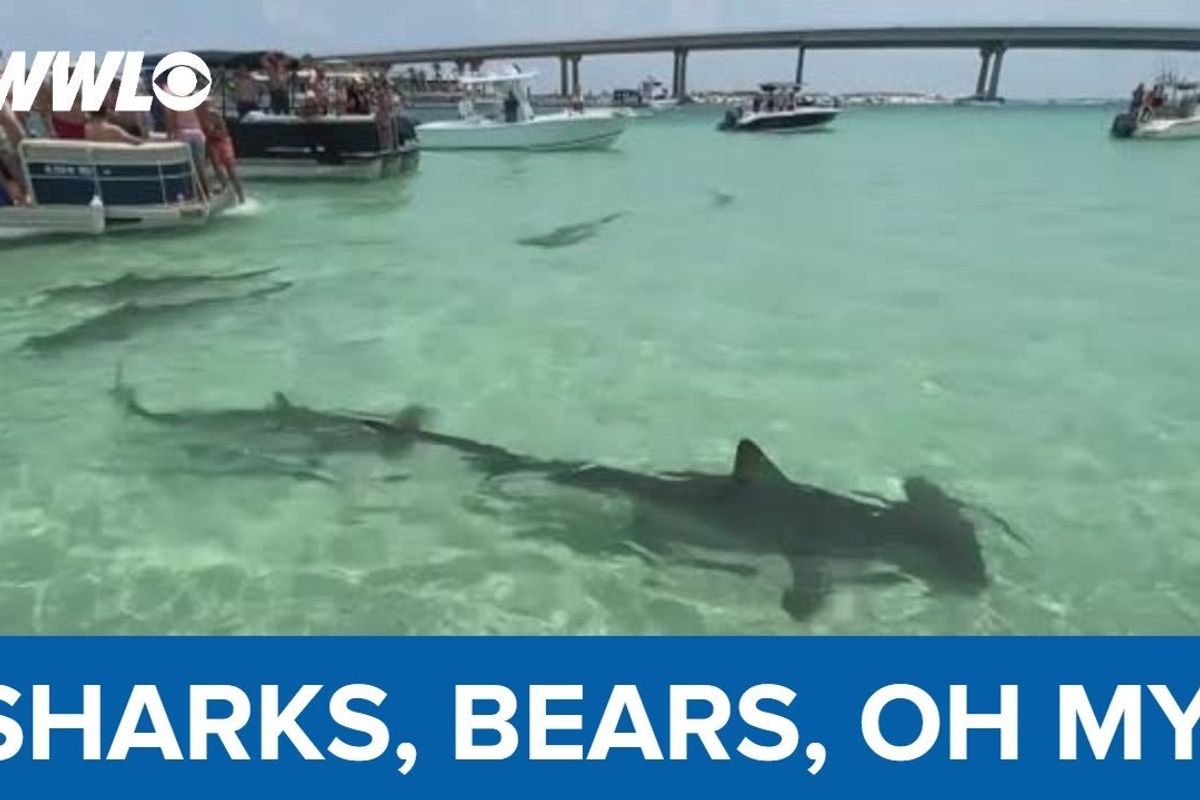When actors are presented as a pair out of a press day, I always wonder how the pairing is done. Now, often, the two actors maybe have a lot of scenes together and it makes sense for the two to talk about how they perform with each other. But, that’s not really the case with Jeffrey Wright and Adrien Brody in Wes Anderson’s new film, Asteroid City. In fact, the two aren’t really in the same realm of existence. (I’ll attempt to explain that part ahead.) Now, the two did star together in 2008’s Cadillac Record, but I got the feeling this wasn’t a reunion celebrating the 15th anniversary of that particular film. And they both were in Anderson’s The French Dispatch, but not in the same vignette. It seems, this time, As Brody puts it, he wanted to be paired with someone who gave good answers so he wouldn’t have to do much. (Which is true, Jeffrey Wright does give really good answers.)
The easiest way to describe Asteroid City is to just ask, “What would it look like if Wes Anderson had made Close Encounters of the Third Kind?” It would look a lot like this. This is a movie that features, perhaps, the most twee alien in cinematic history. Getting into the actual plot gets a little more complicated. We are told upfront this story is a play. And there is a play, but the story presented in the play is the behind-the-scenes making of the play, in which Adrien Brody plays the director, Schubert Green. The actual narrative of the play is presented as a movie. The one we are watching. In that, it’s 1955 and a whole host of characters wind up in a remote desert town for a school science invention competition where kids display the new ray guns and jetpacks they’ve built. During the course of the competition, an alien visits, briefly. Jeffrey Wright’s General Grif Gibson shows up to then put the town under indefinite quarantine. (Honestly, when you’re watching it, it all makes perfect sense.)
Ahead, Wright and Brody share their experiences working with Wes Anderson over the years, especially Brody who has been in most of Anderson’s movies starting with The Darjeeling Limited. (So, yes, he did wind up having to say some things.) And Wright tells us, as we were watching poor Felix Leiter meet his fate in No Time To Die, Wright was having quite the blast on that very elaborate set.
When they pair people together, I’m always wondering why they choose the people they do. Like, are these two friends?
Adrien Brody: They paired me because I can sit back and let Jeffrey do the talking. And Jeffrey can eloquently describe a mutual appreciation for the work, and for Wes, and I stand by what he says. So, that’s part of it.
Jeffrey Wright: We’re both in trouble because of that, yeah. We’ll get in trouble together, I think.
I’ve always wondered this about doing Wes Anderson movies. Obviously, he uses a lot of the same people from movie to movie, and Adrien has been in quite a few and this is Jeffrey’s second. When you get the call for the second one, is that when you feel like you’re in the group?
Jeffrey Wright: Yes, this is my second. I guess… well, he’s created a company, and I think he chooses people that he thinks can be versatile and play a variety of things. He’s very specific in what he creates, but also who he invites. And I, as well, think that, after the first one as an actor, you get a sense of how he works. And he gets a sense of how you work, and if it syncs, then why not do it again? I absolutely adored working with him the first time and I really got him. I kind of got his thing, in this sense. He’s very demanding, somewhat perfectionist, and I appreciate that. But he’s demanding in the best way – in that he’s pushing you to go past where you thought you might go. Or pushing you to do something beyond what you expected. Those are the best directors to work with, but he’s doing it with a gentle hand. It’s a relentless but gentle hand. And I also get his irony, his humor, and his writing. So, it was a great experience the first time and why not do it again?
Adrien’s right, that was great. You really don’t have to do much in these interviews, do you?
Adrien Brody: No! That’s what I’m saying, you know? I can sit back and ogle.
Jeffrey Wright: Road to nowhere, road to nowhere.
I also wonder, if you’re not in one, do you worry? Like when Isle of Dogs comes around were you like, “Hey, why am I not in that?”
Adrien Brody: Nah, it’s all right. I mean, we all live busy, creative lives. I love Wes, we have a great… we have a long life ahead, you know? I really appreciate every one of these experiences and I don’t have any expectations in life, or of others, in that sense. I feel profoundly grateful for how he’s influenced my life, both in the professional and in the personal sense. I mean, I’ve experienced wonderful life experiences together with him, and he’s given me a great foray into comedic work, which most filmmakers weren’t as quick to see me in those kind of characters. And so it’s been wonderful.
That’s interesting. So, he’s the first one who saw that side of you? You were trying to do that, and people weren’t letting you do it?
Adrien Brody: I think work begets work. And if you do well in dramatic films and you aspire to do films that touch you, are meaningful, and have some social relevance, which I do, and you do the press to honor that work, there’s less room for sense of humor, you know? And that doesn’t come across as much. So, it takes filmmakers like Wes, and Rian Johnson, and other filmmakers that I’ve worked with in the past, who have kind of seen that side of me, and you know…
The Brothers Bloom, that movie’s great.
Adrien Brody: It is great!
Last time I talked to Jeffrey was for No Time to Die. We really couldn’t get into spoilers then. I am curious, when you were filming your last scene as Felix Leiter, at that point were you aware James Bond would also die at the end of the movie?
Jeffrey Wright: A bit… Yeah, there was a… Yeah.
I didn’t know if you were watching it at the premiere going, “What the hell?” like the rest of us were.
Adrien Brody: [Laughs] Is there an expiration date on spoilers? What about people who hadn’t seen that film yet?
Well, it’s been a couple of years now, I think the word is out that James met his fate.
Jeffrey Wright: Mainly, when we were filming that, I was having the time of my life. That was the most incredible rig that they had engineered, it was just brilliant. We were up at Pinewood in this… I think it was a six million-gallon tank? I forget exactly. Massive. And Chris Corbould had created this rig that was just so ingenious – that sank and then lifted, and submerged, and twisted. So it was like an amusement park ride and we had oxygen tanks at very strategic spots, so if you got in trouble we could go get a breath. I never had so much fun drowning before in my life. It was a blast. That was mainly what I was feeling, I was just having a ball.
‘Asteroid City’ opens in theaters this weekend. You can contact Mike Ryan directly on Twitter.







